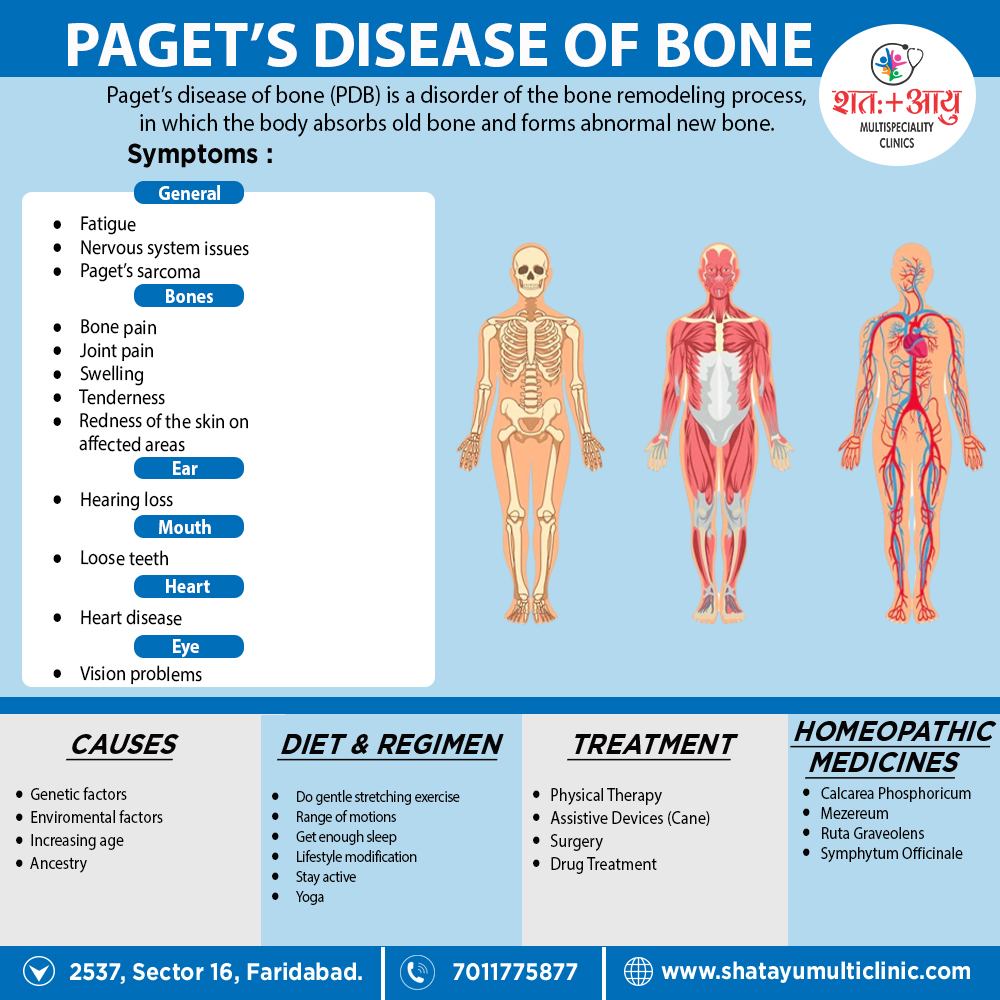There is no cure for Paget’s disease and no way to reverse its effects on bone.
Treatment focuses on relieving symptoms and preventing future complications.
Medications:
If you do not have pain or other symptoms, no treatment is required.
Your doctor may recommend simply monitoring your condition with regular office visits and periodic x-rays to watch for changes in the affected bone and to ensure that complications do not develop.
Nonsteroidal anti-inflammatory drugs (NSAIDs) i.e.:
- Medications such as ibuprofen, naproxen and aspirin can help relieve mild bone pain that arises from Paget’s disease or from arthritis that may associated with the disease.
Assistive devices i.e.:
- If your pelvis or leg is affect by the disease, using a cane can help relieve pain by decreasing the forces going through the bone.
- Using a cane can also help prevent falls, so there is less risk of fracture in the bone a common complication of Paget’s disease.
- Wearing a brace can help relieve pain by preventing malalignment of the affected bones.
Bisphosphonate medications i.e.:
- When bone pain is more significant, medications call bisphosphonates are the treatment of choice.
- These drugs block osteoclasts and can very effective in treating Paget’s disease.
- There are several types of bisphosphonates.
- Some are give by mouth (orally) and others are give as an injection (intravenously).
- During treatment with bisphosphonates, your doctor will perform blood tests periodically to check your alkaline phosphatase level.
- A falling alkaline phosphatase level and improvement in bone pain are indications that treatment is working.
Surgery:
In some cases, surgery may needed to treat the complications of Paget’s disease, including:
- Bone fractures
- Malalignment or deformity of bone
- Severe arthritis
The surgical procedures used to treat fractures, malalignment, or arthritis in patients with Paget’s disease are similar to those used to treat similar conditions in people with normal bone.
These procedures may include:
Internal fixation i.e.:
- This procedure can used to treat fractures in bone affected by the disease.
- In internal fixation, bone fragments are first repositioned into their normal alignment, then held in place with screws, wires, pins, or metal plates attached to the outside of the bone.
Osteotomy i.e.:
- An osteotomy can help relieve pain and restore alignment to weight-bearing joints that are affect by Paget’s disease, especially the knee and hip.
- During the procedure, your doctor will remove a wedge of bone near the damaged joint in order to shift weight onto a healthier part of the joint.
Total joint replacement i.e.:
- In this procedure, parts of an arthritic or damaged joint are remove and replace with a metal, plastic or ceramic device called a prosthesis.
- The prosthesis is design to replicate the movement of a normal, healthy joint.
- Surgery may also needed if an enlarged bone begins to compress nerves, especially in the spine or skull.
- In the rare case of Paget’s sarcoma, surgery is almost always use to try to remove the tumor entirely.
- Chemotherapy and radiation therapy may also be used.
- Because Paget’s disease increases the blood supply to bones, your doctor may recommend taking bisphosphonates for a period of time before surgery to help reduce potential blood loss.
- Bones affected by Paget’s disease may take longer to heal than normal bones.
- A longer period of rehabilitation may also be necessary. [4]

